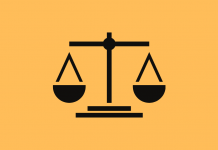This article is written by Anaya Jain, from NMIMS school of law, Bangalore. This is an exhaustive article which discusses default under IBC, 2016 and changes in the same due to pandemic.
Table of Contents
Introduction
The Insolvency and Bankruptcy Code,2016 is an Act of the government to consolidate and amend the laws relating with reorganisation and indebtedness resolution of corporate people, partnership firms and people in a time-bound manner for maximization of value of assets of such people, to promote entrepreneurship, accessibility of credit and balance the interest of the considerable number of shareholders including change in the request for need of payment of Government dues and to set up an Insolvency and Bankruptcy Board of India, and for issues associated therewith or incidental thereto.
The Insolvency and Bankruptcy code took birth by repealing SICA (Sick Industrial Companies Act), which was revoked with impact from 1 December 2016. Slip-ups of the past were taken into account and the Insolvency and Bankruptcy code appeared with a broader reach, with a goal of addressing the issues through more efficient guidelines and executions. It is an act to amend and reform laws whose subject matter has problems of reorganisation and insolvency resolution.
Salient features of the code
- The Insolvency and Bankruptcy Code, 2016, is bifurcated into 5 parts. It comprises 238 clauses and 1 schedule. Part I – Preliminary; Part II – Insolvency Resolution and Liquidation for Corporate Persons; Part III – Insolvency Resolution and Bankruptcy for Individuals and Partnership Firms; Part IV – Regulation of Insolvency Professionals, Agencies and Information Utilities; Part V – Miscellaneous Code and this code applies to the entire of India, however, Part III which is indebtedness resolution and bankruptcy for people and partnership firms won’t reach out to Jammu and Kashmir.
- Clear, coherent and expedient procedure for early distinguishing proof of money related misery and resolution of organizations and limited liability entities if the underlying business is seen as suitable.
- Two distinct procedures for resolution of people, to be specific “Fresh start” and “Insolvency Resolution”.
- Debt Recovery Tribunal and National Company Law Tribunal to go about as Adjudicating Authority and manage the cases identified with indebtedness, liquidation and bankruptcy process in regard of people and unlimited partnership firms and in regard of organizations and limited liabilities entities respectively.
- Establishment of an Insolvency and Bankruptcy Board of India to practice administrative oversight over insolvency professionals, indebtedness proficient agencies and data utilities.
- Insolvency professionals would deal with the commercial aspects of the bankruptcy resolution process. Insolvency professional agencies will create proficient standards, code of morals and be first level regulators for insolvency professionals individuals prompting improvement of a competitive industry for such professionals.
- Data utilities would gather, examine, confirm and disperse budgetary data to be utilized in indebtedness, liquidation and bankruptcy proceedings.
- Enabling provisions to deal with cross border indebtedness.
Applicability
The provisions of this Code will apply to:
- Any organization joined under the Companies Act, 2013 (18 of 2013);
- Under any past organization law;
- Some other organization represented by any special Act for the time being in force, aside from to the extent that the said provisions are conflicting with the provisions of such special Act;
- Any Limited Liability Partnership joined under the Limited Liability partnership Act, 2008 (6 of 2009);
- Such other bodies incorporated under any law for now in power, as the Central Government may, by notice, indicate for this sake;
- Individual guarantors to corporate debtors;
- Partnership firms and ownership firms; and
- Individuals, other than people referred to in clause (7).
in relation to their indebtedness, liquidation, voluntary liquidation or bankruptcy, as the case may be.
What is default under IBC, 2016
- Insolvency and Bankruptcy Code, 2016 has been conceived as an instrument to help debt-laden organizations to clear their dues and start over again subsequent to undergoing the procedure of revival. only if they miss this opportunity for restoration, the liquidation procedure is initiated. The occasion which triggers the applicability of the Code is ‘event of default’. It is in this way important to figure out what comprises ‘default’.
- Section 3(12) of the Code characterizes ‘default’ as non-payment of debt when the entire or any part or portion of the installment of the debt amount has gotten due and payable and isn’t reimbursed by the debtor or the corporate borrower, as the case may be.
- The expression ‘debt has gotten due and payable’ implies that the obligation is payable at the present moment.
- Whenever, according to the agreement between the parties, debt is payable after a specific point of time or on occurring of a specific event, the debt gets due simply after that point of time.
- In this way, if for a situation, the debt is payable and the individual has not made the instalment, a default can be said to have happened and application for that can be brought.
How is this default determined?
Subsection 4 of section 7 states that the adjudicating authority will ascertain the presence of a default from the records of data utility or based on other proof outfitted by the financial creditor under sub-section (3). The provision reveals that default will be resolved according to the submissions of the creditor or the records of data utility. The previously mentioned provision doesn’t give a chance to the debtor to advance his case.
Moreover, the scheme of Part II of the Code is such that if the lender charges default, the borrower may invalidate it by proof of reimbursement of operational debt or by acquiring a notification of the dispute. Be that as it may, under section 7 there is no necessity of such notification to be outfitted to the indebted person before getting the application. Regulation 4(3) of the I&B (Application to Adjudicating Authority) Rules, 2016, accommodates a duplicate of the application recorded with the adjudicating authority to be dispatched to the corporate indebted person.
In any case, the provisions of the Code don’t bear the cost of an opportunity for the debtor to make his submissions as for the default. This deliberate omission on some portion of the law-making body ought to be perused as a clear expression of its intent. Such scheme under section 7 is likewise reliable with the goal of the Code to guarantee brisk removal of the application by NCLT and therefore, Insolvency Resolution Process. It gives a safeguard against trivial and vexatious protests by the debtors to slow down the application.
However, the adjudicating authority has perused in the provisions, the need of giving a chance to the indebted individuals to make their submissions as for default. Ahmedabad bench of NCLT in M/s State Bank of India, Colombo v. Western Refrigeration Pvt. Ltd perceived that the most significant capacity of the Adjudicating Authority is to find out the presence of default and that a default has happened. It saw that to discover a similar it is important to consider the reports documented by both Petitioner Bank as well as the Respondent Company and dispute of both the parties.
Even though the decision spares an innocent indebted person from the grave effects the admission of application may have on its business and somebody who may have legitimate defence against the default or who due to a coincidental mistake neglected to reimburse the debt, however, had no intention of not paying, it likewise opens entryways for some different objections by the debtors which may have no lawful premise and been advanced just to postpone and disappoint the procedure. It is presented to be seen, what potential results would this be able to have on the working of the Code and severe course of events of 14 days to arrange the application. On the off chance that the Adjudicating Authorities are not strict on debtors getting paltry complaints, it may make some hard time disposing the applications.
Furthermore, it is to be noticed that the Code conceives the foundation of data utilities which when once framed will record all monetary data relating to debts and its payments. When this information utility foundation appears, it will be simpler to decide the presence of default as these utilities will empower access to unquestionable and straightforward proof of the default. The records with the Utilities will fill in as essential proof with minimum possibilities of falsehood. Along these lines, it is just a matter of time that default can be set up effortlessly and precision without a lot of help by submissions of creditor or debtor.
Procedure to resolve insolvency under the code
At the point when a default happens, the resolution procedure may be started by the debtor or creditor. Insolvency professionals regulate the procedure. The expert gives monetary data of the debtor from the data utilities to the creditor and deals with the indebted person’s assets. This procedure goes on for 180 days and any legitimate activity against the debtor is precluded during this period.
Change in default threshold due to COVID-19
- In a major relief for small and medium enterprises, the central government has raised the edge for default under the IBC to Rs 1 crore from the present Rs 1 lakh.
- Tending to the media through videoconferencing, Union Finance Minister Nirmala Sitharaman said that the decision has been taken to forestall activating insolvency procedures against MSMEs.
- She guaranteed that the administration will keep a watch on the circumstance and if the circumstance continues as before past April 30, the legislature may consider suspending Sections 7, 9, and 10 of the Insolvency and Bankruptcy Code (IBC) for a half year.
- This will keep companies from being constrained into bankruptcy procedures in such force majeure reasons for default.
- The decision comes in the midst of the coronavirus alarm and complete lockdown across 30 states and union territories in India.
- Businesses across the nation have been seriously hit and are probably going to confront money related misfortunes because of the lockdown. Micro, Small and Medium Enterprises are probably going to the more affected because of constrained capital reserves.
Conclusion
One can suitably say that the laws on Insolvency in India have been a mystery. There has been an ascent and fall of an indebtedness system, where each came to duplicate the other, scarcely carrying anything new with them. It is at first sight that IBC is an exhaustive enactment with a fast and explicit strategy for managing the issue of indebtedness. The time-bound nature of IBC is a success in circumstance as the resources of the Companies are put at the ideal spot in time, regardless of whether it is by payment to creditors or by winding up. The Company doesn’t continue running in losses for a perpetual timespan making a mishap in the economy in entire and affecting the creditors independently.
The IBC came as a one-stop arrangement that followed a planned income approach having tough columns for its help, outperforming the current indebtedness system. The foundation of all downsides was that the Code appeared to be somewhat over-driven. So as to consolidate the pros of other country’s bankruptcy laws, the Code disregarded some genuine residential issues-particularly occupations and non-institutionalised investors as well as creditors.
LawSikho has created a telegram group for exchanging legal knowledge, referrals and various opportunities. You can click on this link and join:












